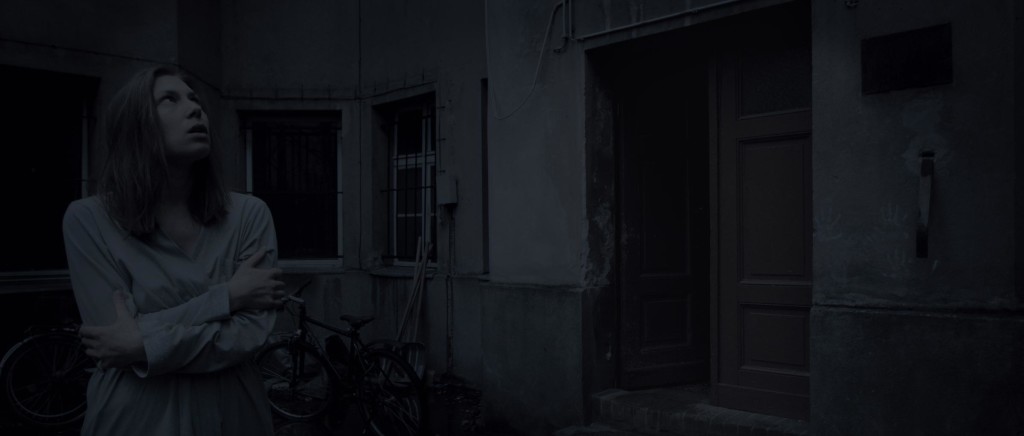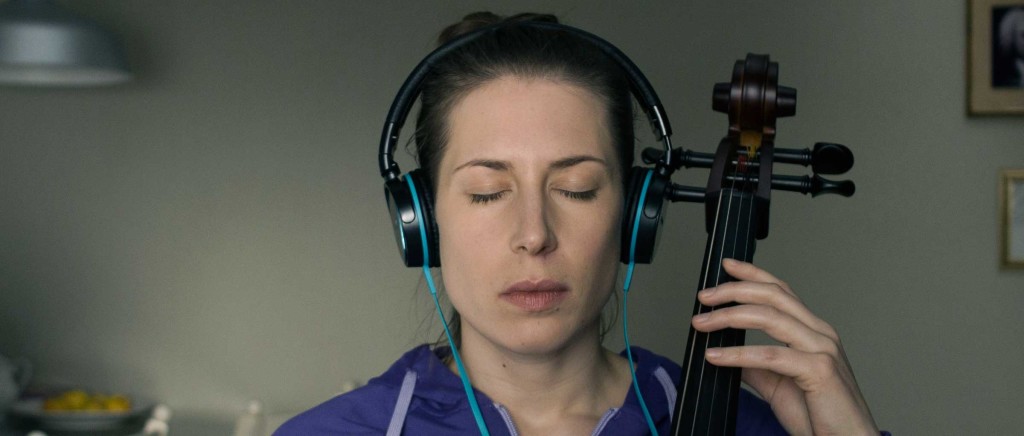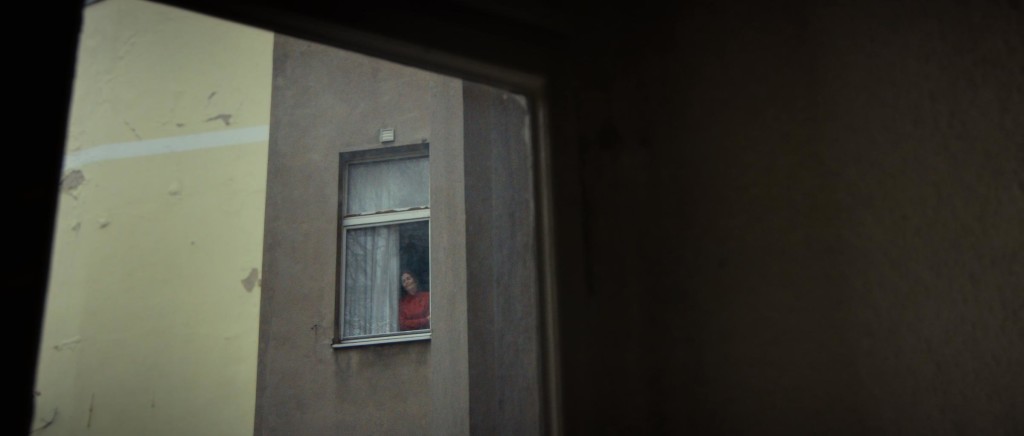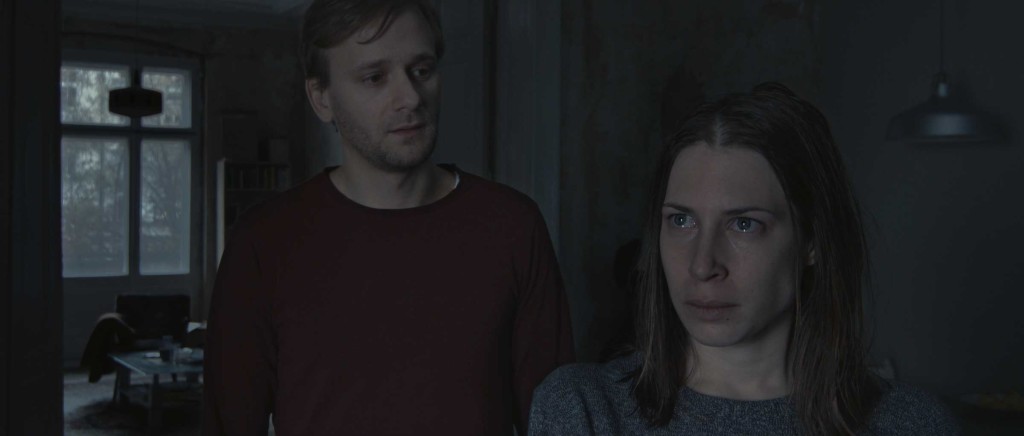Country: Austria, Germany
Language: German
Run time: 98 min.
The idea of urban living in some ways is a paradox. Artists and creatives move to cities to live closer to culture and diversity. But high rise apartments and close-quarter dwelling also leads to ideas of urban alienation and anxiety, described by cultural theorist Mike Davis as his “Fortress Theory,” (applied to Los Angeles). In a Fortress City, a “a destruction of public space […] derives from and reinforces a loss of public-spiritedness” (Boland). This desecration of public space through fencing, barbed wiring, zoning and trespassing laws create a “Fear of Crowds,” in which urban reconstruction not only accentuates class divisions but contributes to a form of paranoia, brought forth from the notion that “security” will leave undesirables out.
Jakob M. Erwa’s psychological thriller HomeSick, which screened at the 51st Annual Chicago International Film Festival, plays heavily off the paradoxical tension of urban living and fear of others, and displays the ways in which creative living in fortress cities can be driven to the point of anxiety, paranoia and mental breakdown.
The film focuses on Jessica (Esther Maria Pietsch), a top-tier cello student, who has moved into a new flat in Berlin with her boyfriend Lorenz (Matthias Lier), a physiotherapist. Everything in their life seems to be going well on the exterior until Jessica believes a neighbor is spying on her and intervening in their life in horrendous ways. This suspicion, or paranoia, will eventually lead to Jessica’s emotional unraveling, resulting in tragic consequences for not only herself but all those around her.
Jessica and Lorenz are at first elated by their new social position as owners of their own space; inviting friends over for wine and dancing to music on the stereo before their neighbor Hilde is introduced, asking them to turn off the music. Hilde is an older woman who mentions to them the way the neighborhood is changing, and the ways in which youth always replace the old. Her request to turn off the music represents urban living as a hindrance to spiritedness and creativity, morphing their new home quickly into a symbolic fortress of regulation rather than a place of unregulated creativity.
Jessica’s occupation as a musician necessitates the apartment be a creative space. But every time she takes out her cello, a buzz at the door, or a stare from Hilde’s kitchen window above, distract her from playing. The only time Jessica’s cello emanates noise from within the flat, it is an abrasive, harsh tone of her cleaning the strings, jarring the sparse sound design of a steaming tea kettle or creaking floorboards. Visually, the film cuts about half the time of a typical narrative, allowing the fortress, where most the film takes place, to feel all that much more overbearing.
Hilde’s stares become a routinely disruptive action, shot subjectively from Jessica’s point of view; from behind her window looking up to Hilde’s. Jessica’s suspicion that Hilde has it out for her are accentuated by disturbing gifts left in front of their door as well as by the disappearance of their newly purchased cat. Jessica can’t seem to find any help by asking the neighbors, who are aloof and distant when Jessica approaches. Nor can she find concrete support in her significant other, who although is caring, works during the day and doesn’t seem to notice the circumstances. When the couple are together, they are mostly shot from a frame within a frame; the camera peeking at them from outside the bedroom door. The actions occurring off screen not only lend heightened suspense, but also serve a thematic function of representing the fortress they live in as a fragmented space; one where neighbors, and even Jessica’s significant other, are unable to help each other or recognize each other’s “insanity.”
Just when audiences begin to trust Jessica’s point of view, Erwa flips the script when Jessica’s anger and paranoia reaches a crescendo after a surprise discovery about her cat. Jessica runs up and bangs on Hilde’s door, screaming and interrupting the malaise of the domestic fortress. The neighbors all exit their rooms, and while Jessica cries and pleads, they only can awkwardly stare until she has withered in anguish and Lorenz apologizes, puts her arm around her, and walks her down the stairs. This descent signals a dramatic shift where the viewer begins to question if what Jessica has been seeing all along is actually real, or only a manifestation of her anxiety and paranoia. Whether she has in fact, replaced the old and become the menacing figure she believes Hilde to be is a question left in the hands of the audience.
The suspenseful, slow-burn pacing of Jessica’s descent is so effective, due in large part to Esther Maria Pietsch’s superb acting, and the ways her eyes are both so disturbingly focused and revealing. A long take of her intensely staring at Hilde’s window reveals at once mania, pride, terror and obsession.
Overall, Erwa’s HomeSick turns out to be a visually gripping, claustrophobic story of how urban space can contribute to artists’ downfall and paranoia, and circumvents the Black Swan-esque melodramatic moments for shots that are deeply affecting for their simplicity and focus. A twist ending, revealing itself in the very last frame of the film, only adds an exclamation point to the tragic trajectory of Jessica’s character, whether it was precipitated by the fortress of the new flat, Hilde, her own anxieties, or a combination of all three.





